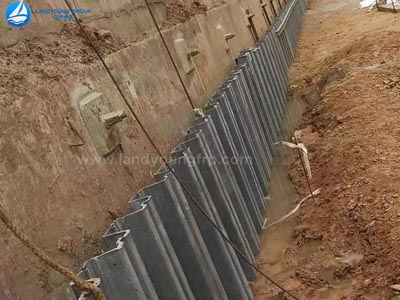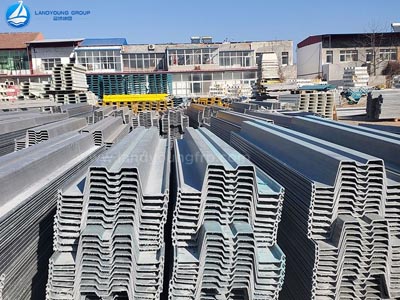How Does Sheet Piling Work?
Sheet piles are used in the construction industry to provide temporary and permanent walls. Sheet piling is used as excavation support and soil retention. It creates a boundary that keeps the soil away from the structure.
What is sheet piling?
As the name implies, a sheet pile is a narrow sheet material, usually designed with angular profiles and interlocking edges, so that multiple sheet piles can be assembled together to form a structurally sound and often waterproof wall or barrier.
They are usually made of steel, but wood, precast reinforced concrete and even some types of plastic can also be used. Steel sheet piles are usually manufactured using sustainable recycled metals and where soil chemistry requires it, they are coated with a corrosion-resistant coating.
Steel sheet piles are the most commonly used type because they are so versatile. They can be welded or bolted together vertically to provide greater length or depth if desired. Compared to their weight, they are highly resistant to the stresses caused by driving and offer the best strength options.
FRP Sheet Piling
How do sheet piles work?
The concept of a sheet pile is very simple. Where a wall or siding needs to be blocked, steel plates are wedged into the soil at predetermined intervals. The plates are driven into the soil with a vibratory or impact hammer. In some cases, they may be installed together with a hydraulic press. The placed sheets interlock with each other, resulting in a variable design that can be adapted to a specific retention job. Anchors are easily added if greater force is required.
Uses of sheet piling
Temporary walls are used to prevent collapse during construction in confined spaces; to provide protection for workers working in the vicinity of the area.
In domestic settings, sheet piles are used as permanent walls because they provide stability and durability to interior walls, especially basement walls.
Sheet piling is also used to prevent flooding from affecting structures close to the shoreline.
Protects foundations from water damage.
Supports excavation of parking structures, basements, foundations, pumping stations, and the construction of weirs, seawalls, and bulkheads.
FRP Sheet Piling
Types of sheet piles
Anchored Sheet Pile
Anchored sheet piles cause less penetration, which is economical when the height is less than 6m. This is because the anchor wall is prestressed to eliminate the relaxation of the system. It stays in place until creep occurs. Anchor walls provide better back slope settlement because they undergo less lateral deflection. The settlement has two main causes.
If the anchor hole collapses prior to grouting.
If cohesive material flows into the pit through an opening previously made for anchor installation.
The anchor creates a massive gravity wall by keeping the soil between the anchor and the wall in a compressed state.
Cantilever Sheet Piles
These are typically used for heights of 6m or less. In geotechnical practice, cantilevered embedded retaining structures are used as temporary retaining structures with sheet walls and bulkheads and pile walls as permanent retaining structures.
Cofferdams
A cofferdam is used as a temporary structure to prevent soil and water from entering an excavation when constructing a bridge. It provides a dry working environment underwater by sealing the structure with concrete to prevent water infiltration.
FRP composite sheet piles are among the strongest and most durable synthetic pile products in the world. FRP composite is the material of choice when environmental factors require that sheet pile wall structures will not rot, decay, rust, or spall. FRP composite sheet piles are specifically designed to replace the competitor's conventional sheet piles.
Advantages of FRP composite sheet piling
Durable
In corrosive environments, FRP is protecting your assets as wood rots, concrete spalls, and steel rusts. Based on independent testing and analysis, FRP walls can last 75+ years when properly designed and installed.
Provides higher wall heights
FRP piles offer the same benefits as vinyl sheet piles but can achieve much higher wall heights. It is more economical to use composite materials between 6 and 18 feet of wall height.
Attractive
By using an attractive graphite gray color, sheet piling blends perfectly with marine applications, while custom color matching colors can create a million-dollar look for your project.
Compatible with conventional equipment
Installation options for FRP sheet piles include vibratory hammers, plate compactors, and other construction methods.
If your project requires a high strength-to-weight ratio, corrosion resistance, low/almost maintenance-free operation, and product versatility, FRP composite sheet piles are an excellent choice. LANDYOUNG FRP sheet piling is a composite material profile made of E-glass fiber, unsaturated polyester resin, or vinyl resin by pultrusion process. For more information on the benefits of FRP sheet piling, click here.



评论
发表评论